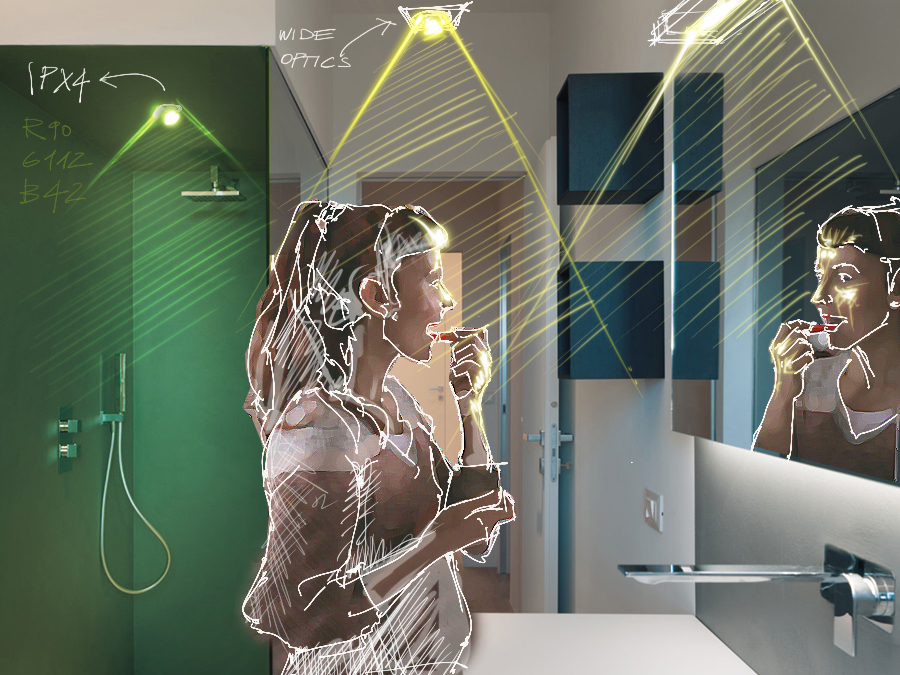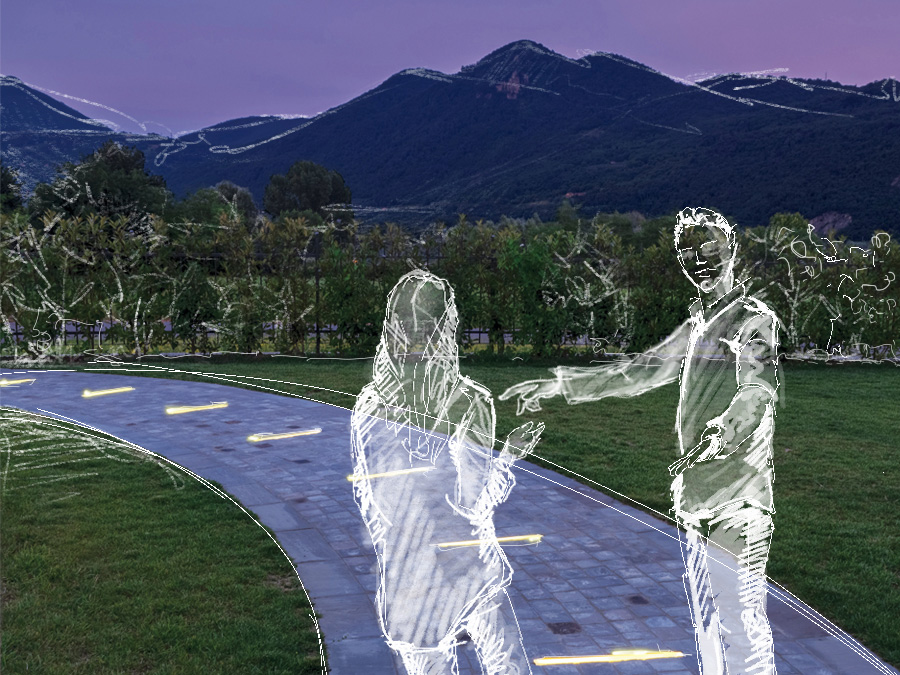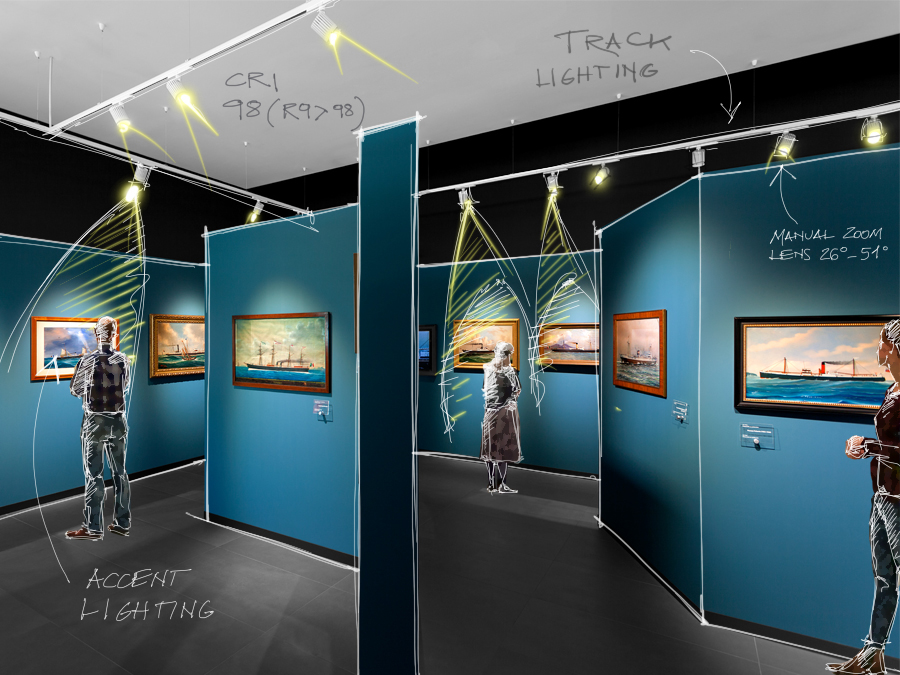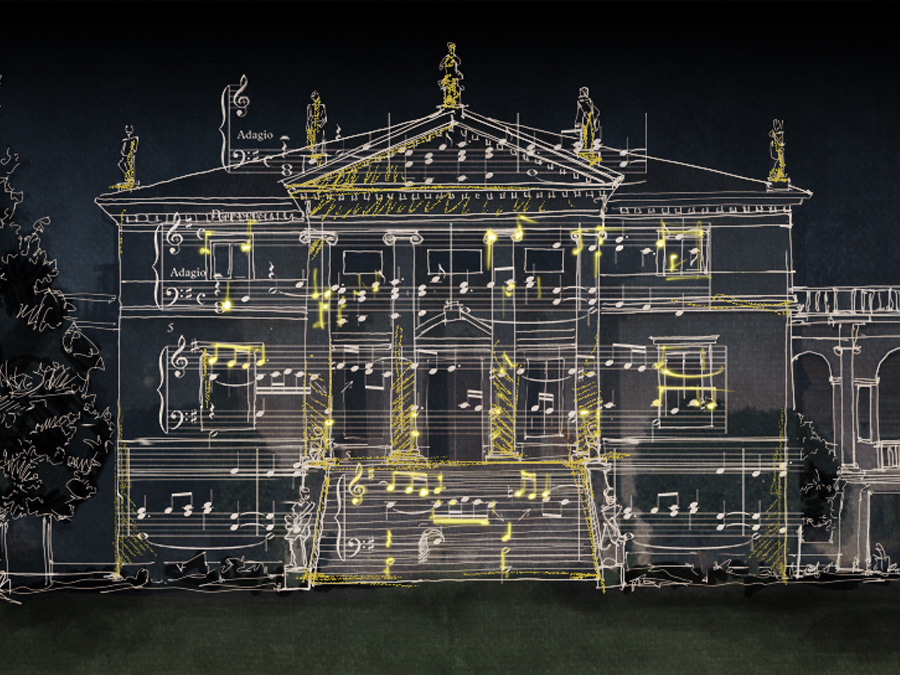In the previous instalment, we looked at lighting the living room, kitchen and dining room. Now we are turning our spotlight on the bathroom, bedroom and passageways and weaving our way through standards, functional requirements and atmosphere.
Points of light between the baths, basins and mirrors
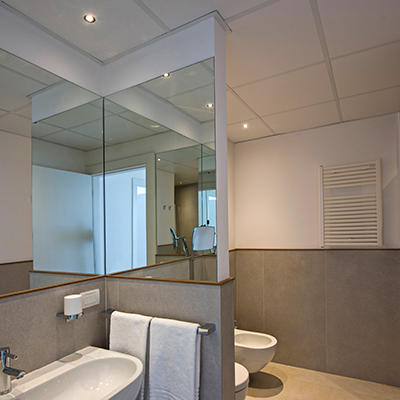
Jessica looks at herself in the mirror and wonders which lipstick to choose for her night out: brick red, cherry red or a soft pink? She's going to focus on her eyes and pile on the mascara, so a neutral tone will be best.
Same house, different bathroom. Megan has dimmed the lights, and she is about to enjoy a long, hot bath – she won’t be getting out again for a good hour.
Bathroom lighting needs to serve several purposes: when we stand in front of the mirror, we have to be able to see clearly; when we’re taking a bath, soft lighting helps us to create a relaxing atmosphere. The size of the room adds to the complexity of the problem – bathrooms are often small rooms full of both functional and decorative items.
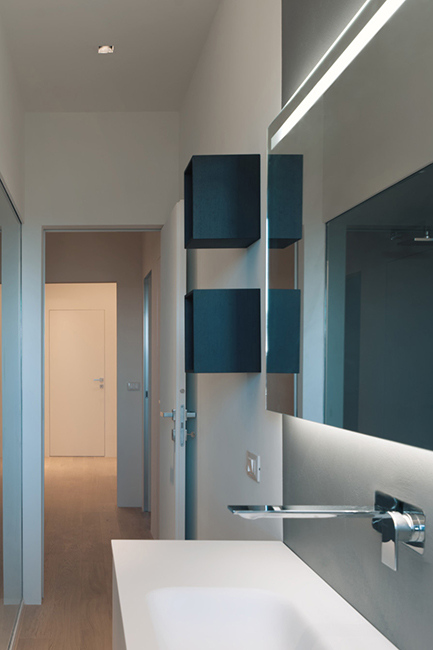
Quad 6.1, 3000K, 6W, 24°, black. Private residence, Pescara, Italy. Project and light planning by arch. Beppe Barone
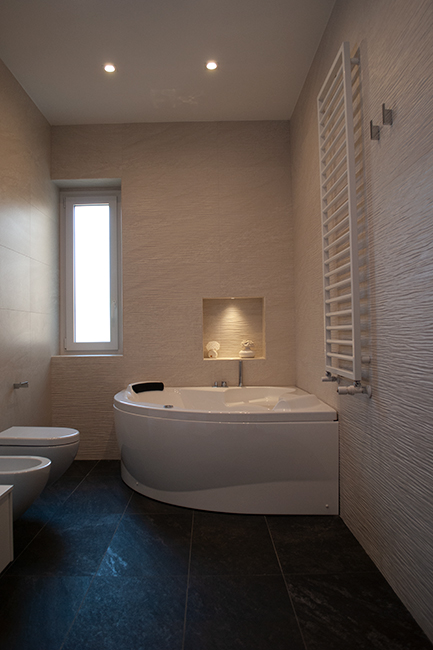
Esem 2.0, 3000K, 2W, 36° / Esem 3.0, 3000K, 8W, 54°, white Go to the project and credits
Let’s take things systematically and examine the three different, but complementary, lighting needs:
💡 ambient lighting;
💦 basin and mirror;
🛁 relaxation area, with the shower or bath – and, if you’re lucky, hydro-massage jets :)
💡 To make sure the ambient light reaches every corner of the bathroom, we generally use ceiling fixtures with wide or diffuse optics.
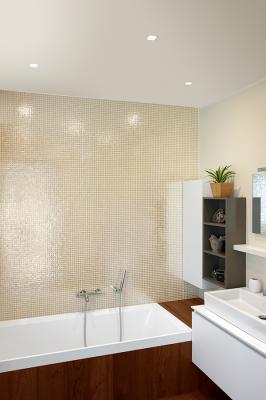
Turis 1.0, 3000K, 11W, white Go to the project and credits 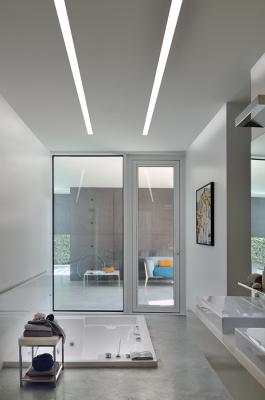
Brenta 2, 3000K, 27W/m, diffuse optics Find out more about the product 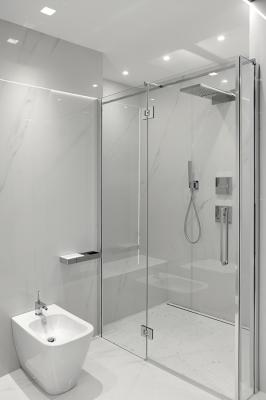
Turis Mini 1.0, 3000K, 5,5W Find out more about the product
💦 Next comes the lighting for the basin and mirror, where the priority is to see clearly. The lighting fixture is usually positioned over the mirror, to illuminate both it and the person in front of it. Here, too, the light output is wide or diffuse. This ensures no shadows are created on Jessica’s face, and she can see perfectly to get her makeup just right. According to the standard1, the average illuminance level indicated for this area is 300 lux, compared to just 100 lux for ambient light.
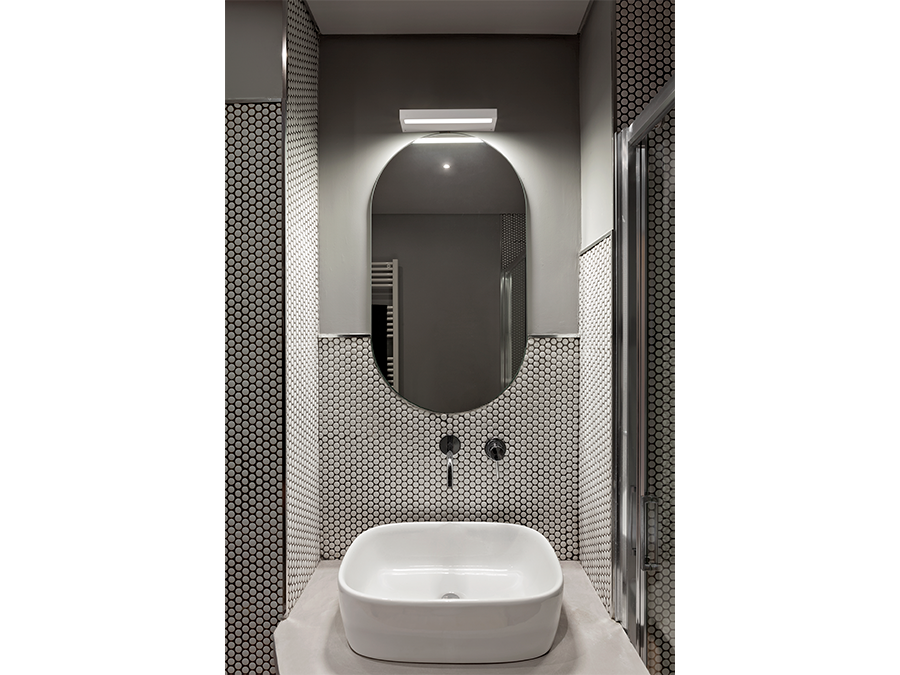
Ella IN 3.0, 3000K, 19W, white / Esem Mid 1.0, 3000K, 3W, 22°, white, customized version IP44 Go to the project and credits
An alternative to wall lighting is ceiling downlights above the wash basin, preferably with tiltable optics, so their light output can be directed exactly where it’s needed.
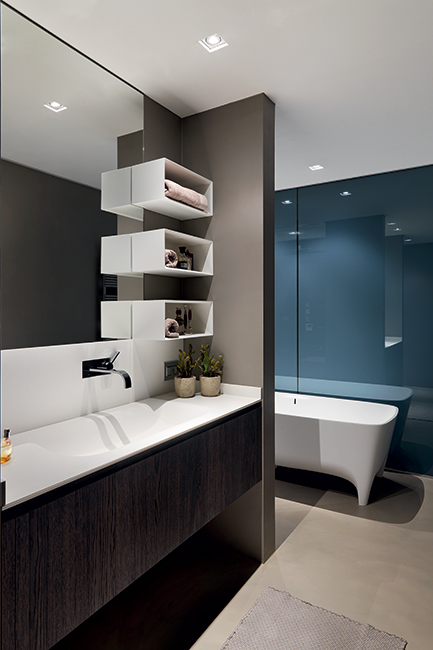
Quad Maxi 4.1, 3000K, 14W, 20° Go to the project and credits
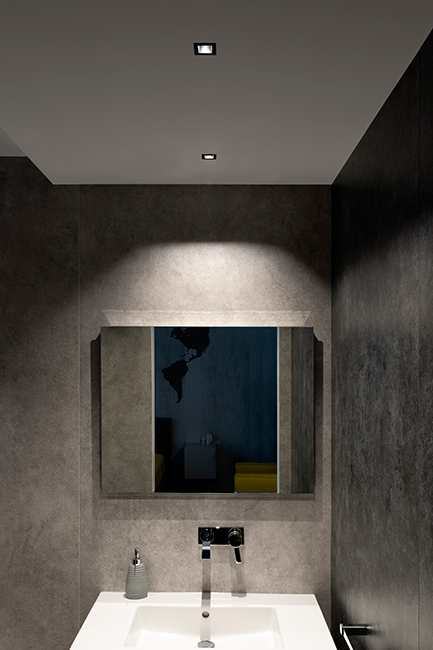
Bitpop 1.0, 3000K, 8W, 42°, black Go to the project and credits
🛁 Finally, we come to the shower.
Installing lighting fixtures in or near the shower area allows you to create an intimate and relaxing atmosphere. You can dim the light from the ambient fixtures, as Megan has done, or switch them off all together. In the two examples below, the shower cubicle becomes its own space with the aid of a diffuse-light profile running along the edge of the glass or a group of diffuse-light recessed fixtures.
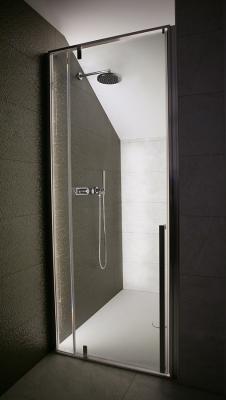
Rio 2.4, 3700K, 38W Go to the project and credits 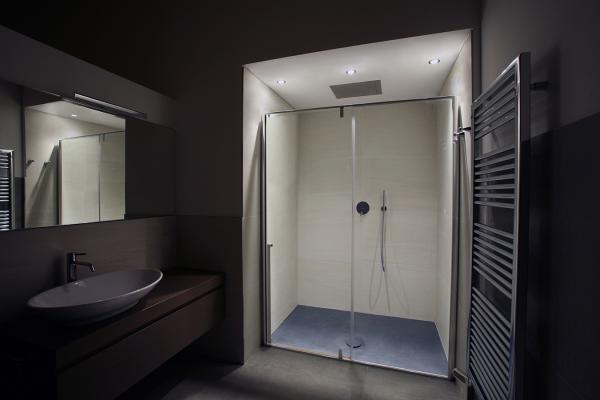
Smoothy 5.4, 4000K, 10W, 38° Go to the project and credits
A touch of colour: with an RGB recessed fixture, you can recreate a chromotherapy effect and enjoy a quick spa experience in your own home.
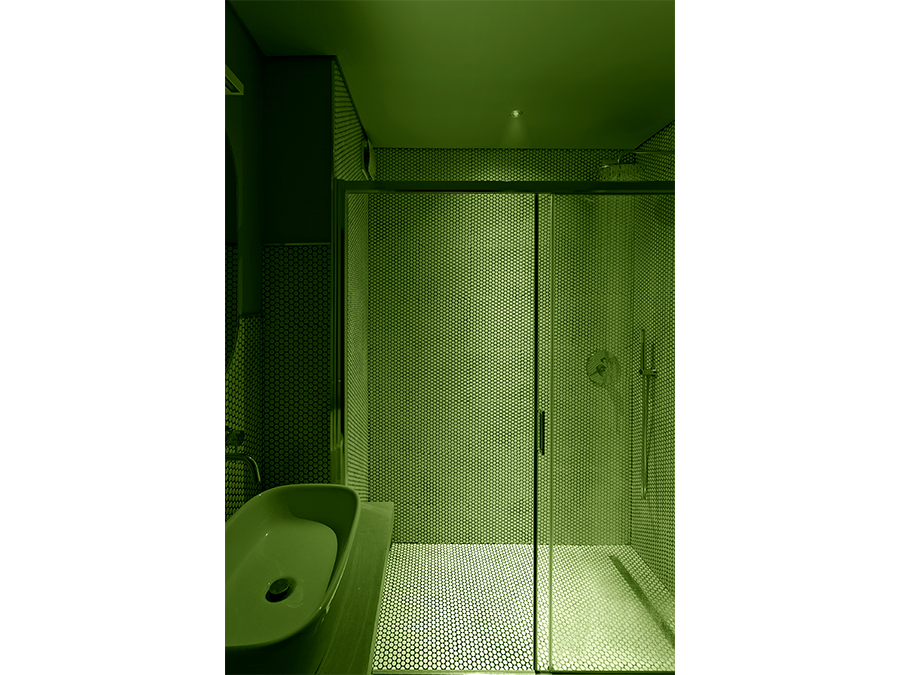
Beam 1.0, RGB, 3W, 30°, stainless steel Go to the project and credits
Meanwhile, the position of the lighting fixture in the bathroom determines the ingress protection and supply voltage required. The Italian standard CEI 64-8/7 identifies three different zones:
🔸 Zone 1 concerns the shower or bathtub, the most critical area from the point of view of the risk of electrocution from direct or indirect contact. Here, an IPX4 rating is required, indicating devices protected against splashing water, with Class III insulation.
🔸 In Zone 2, up to 60 cm from the edge of the shower or bathtub, an IPX4 rating is still required. With Class I insulation, if the device is protected by a 30mA residual-current circuit breaker, otherwise Class II or III.
🔸 Moving away from the more critical zones 1 and 2, we come to zone 3, which could contain the washbasin and mirror, for example. This requires an IPX1 rating and any of the three insulation classes.
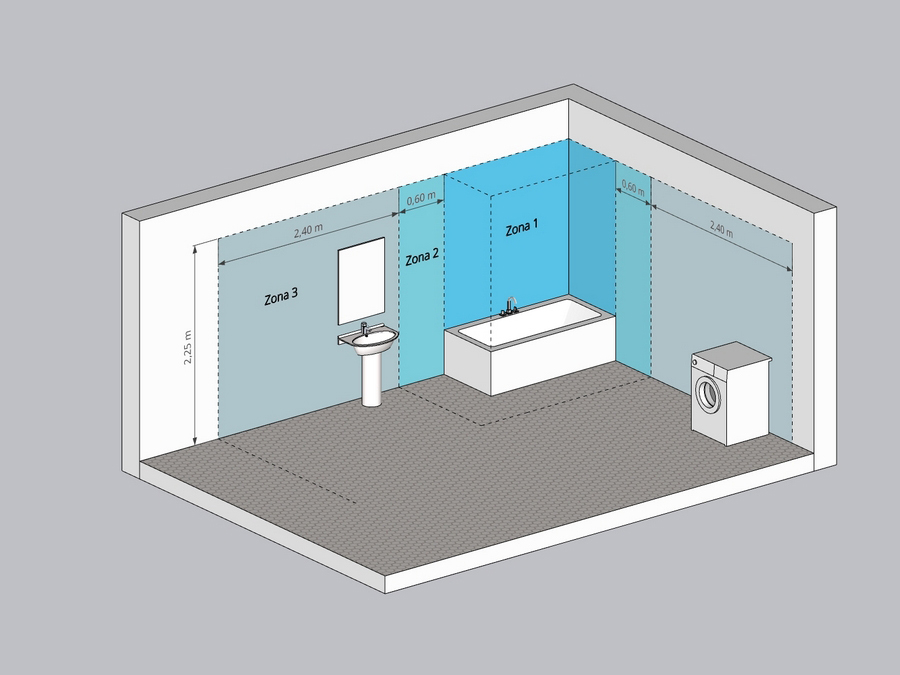
CEI 64-8 standard Part 7 “Requirements for special installations or locations”. Division into zones.
Soothing lighting for the bedroom
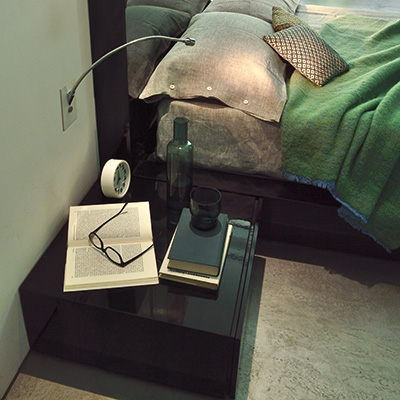
Tom opens his eyes and realises it’s Saturday – there’s no alarm clock and no commitments, and he can stay in bed as long as he likes. It’s November, and the damp mist outside is not at all inviting: he’s better off settling back down in bed and reading by the light of the bedside lamp.
The ambient lighting in a bedroom is soft, around 100 lux. It is best achieved with fixtures that produce indirect light. This rests our eyes, is conducive to sleep, and wakes us gently.
Single- or double-beam wall-mounted fixtures with a gentle and non-invasive light can achieve this effect – even better if we choose a 3000K warm colour temperature and diffuse optics.
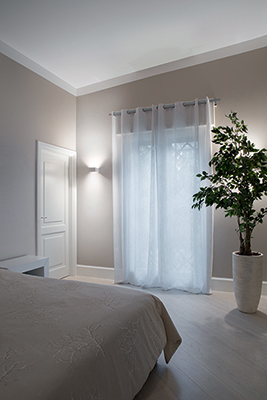
Below is an original application, where recessed fittings point towards the beamed ceiling, creating an interplay of alternating light and shadow, of positive and negative space. In this case, the white wood lightens the room even further.
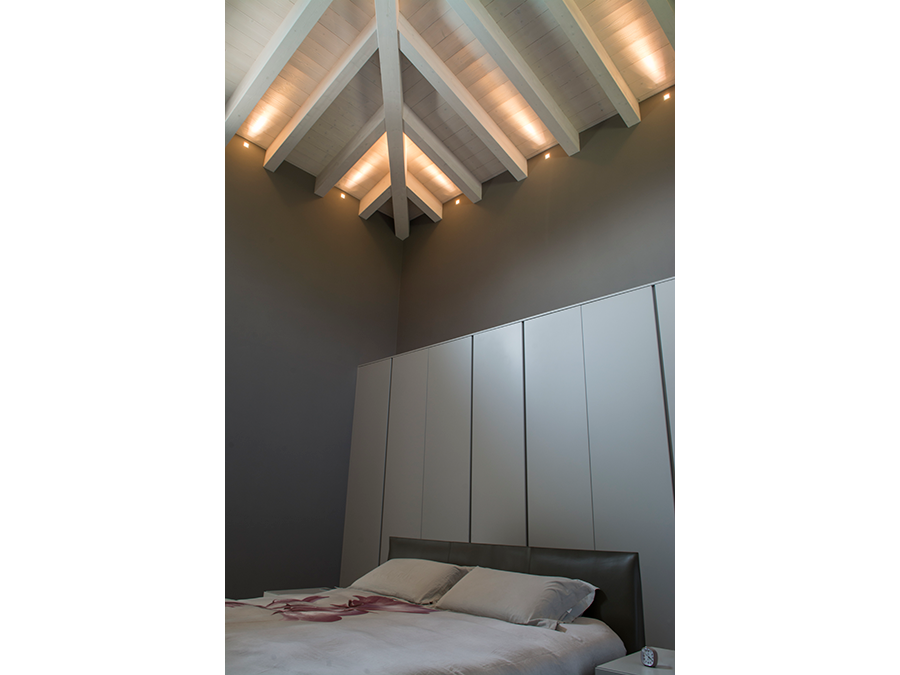
Quad 2.0, 3000K, 6W, 12°, white Go to the project and credits
Tom has given this some thought: the reading lamps on the wall provide task lighting to complement the ambient lighting. One advantage of these devices is their dual flexibility: the light beam can be adjusted using the manual zoom lens, while the arm can be bent to direct the output precisely onto the pages of his book.
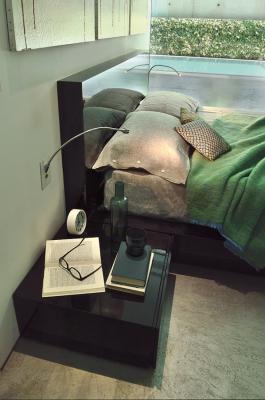
Wall 8.2, 3000K, 3.5W, 25°, chrome Find out more about the product 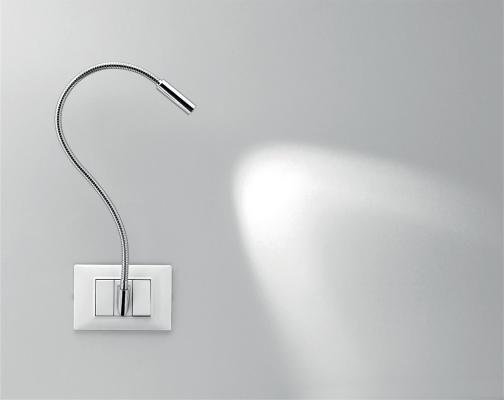
Wall 3, 3000K, 2.5W, chrome, 400 mm Find out more about the product
Alternatively, the light could come from a wall-mounted fixture with downward light output. Or from the ceiling, with a small projector directed at the bedside table and the side of the bed. Whatever your preference, the standard1 recommends an average illuminance of 300 lux for reading.
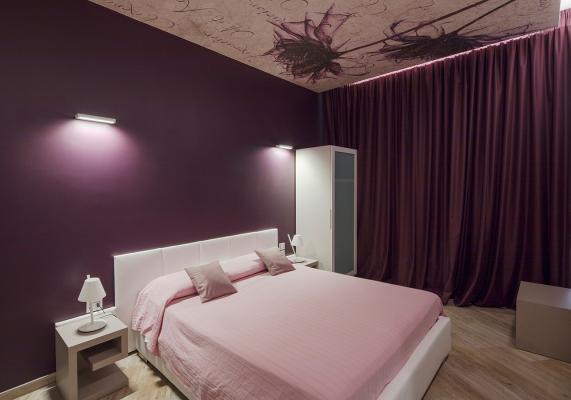
Ella IN 3.0, 3000K, 19W, white Go to the project and credits 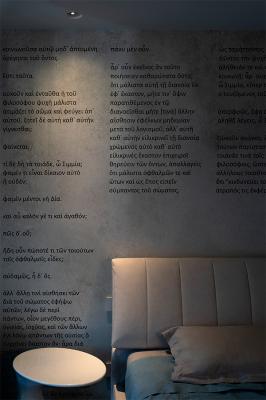
Krill 1.0, 3000K, 1W, 23°, white Go to the project and credits 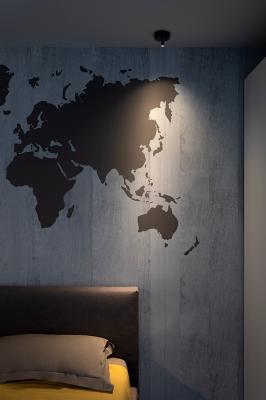
Krill 1.0, 3000K, 1W, 23°, black, ceiling rose Go to the project and credits
Sometimes a bedroom has a sitting area, a space that calls for some light of its own. The role we assign to this “room within a room” will dictate our choice of lighting. The difference this choice can make is immediately clear in the two photographs below. In the first case, a small, recessed light with 14° optics illuminates only the sofa for an intimate atmosphere. In the second, a linear profile with diffuse optics energises the lively, colourful sofa even further, creating a functional area.
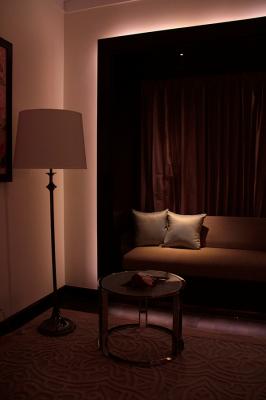
Esem Mini 1.0, 2700K, 2W, 14°, black Find out more about the product 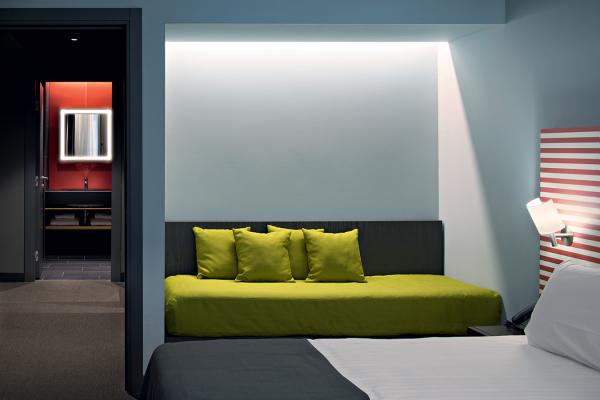
Snack 1.0, 3000K, 5W, diffuse optics, anodized grey, version with customizable length / Esem 3.1, 3000K, 8W, 54°, black Go to the project and credits
Light up corridors and passageways
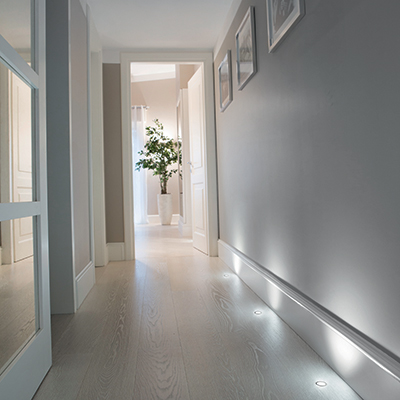
Charlotte closes the front door behind her with a bang and drops her bag in the hallway. She’s so tired that even the thought of walking all the way to her bedroom is too much. She slumps to the ground in the corridor, unable to do more than take a few deep breaths and stare at the small step lights in the floor.
Hallways and landings are functional areas in a home: they connect the living area to the bedrooms, one floor to another.
To light these passageways, we can use direct light from the ceiling, wall lighting with wall-mounted fixtures or orientation lighting with step lights. The aim, of course, is to enable any potential trip hazards to be seen without dazzling.
🔸 Downlights with wide or diffuse optics installed in the ceiling evenly illuminate the hallway or landing. There are no dark corners: everything is clearly visible.
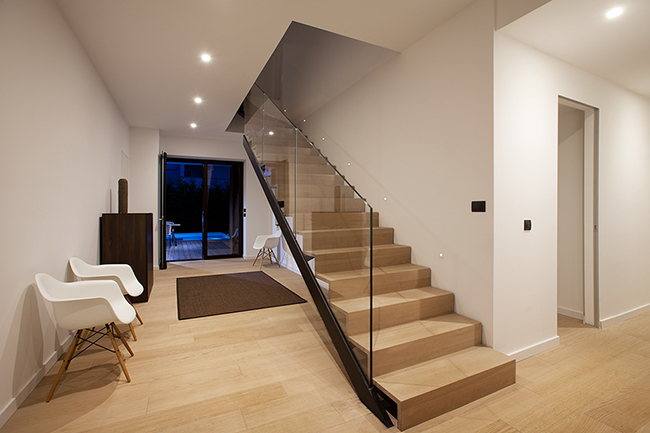
Turis 1.0, 3000K, 11W, white Go to the project and credits
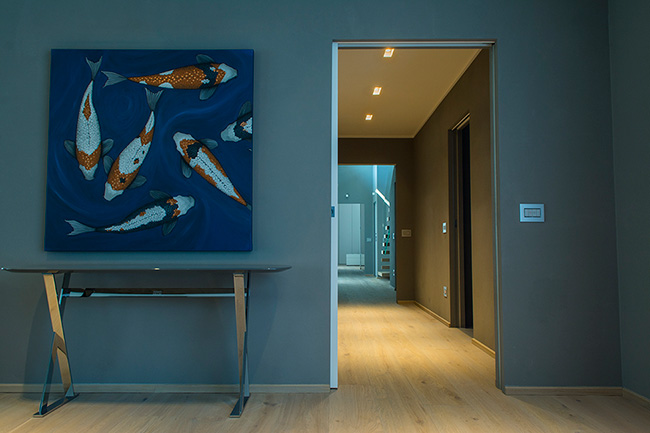
Quad 6.3, 3000K, 18W, 24°, white Go to the project and credits
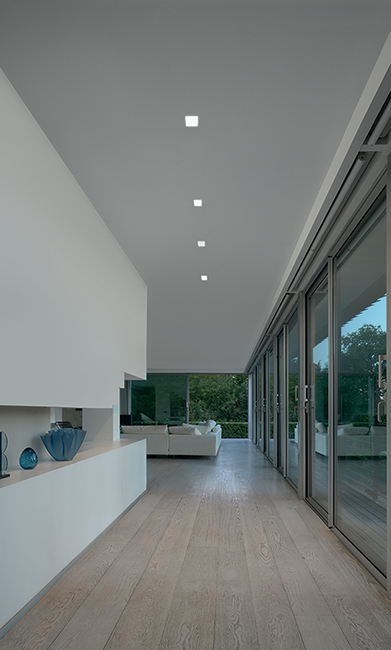
Turis Mini 1.0, 2700K, 5,5W, white Find out more about the product
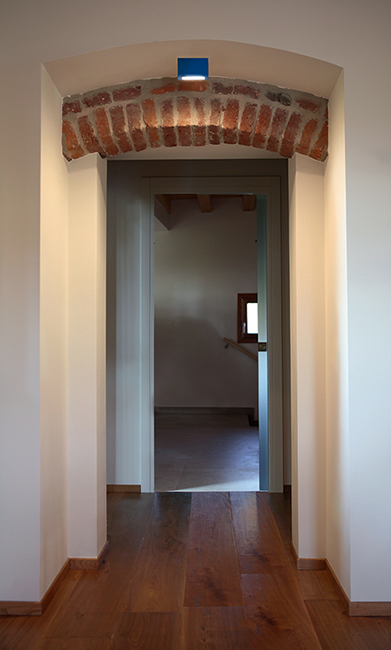
Ello IN 1.0, 3000K, 7W, diffuse optics, Capri blue Find out more about the product
🔸 If we choose wall-mounted fixtures, the light can be indirect, preferably diffuse, as in the first photo, or point downwards to highlight certain features, such as the entrances to other rooms, or an antique chest.
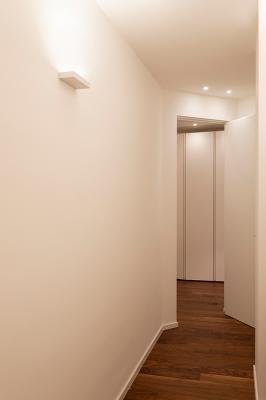
Ella IN 2.0, 3000K, 13W, white Go to the project and credits 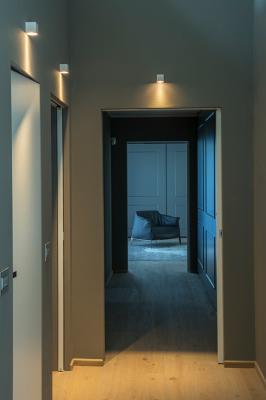
Cube W 1.0, 3000K, 6W, 18°, white Go to the project and credits 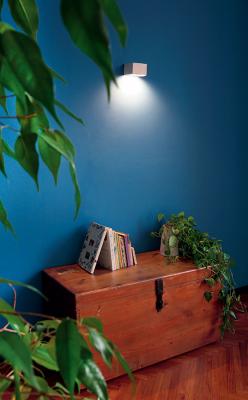
Versa 1.0, 3000K, 9W Find out more about the product
🔸 Often, in a corridor, we want an unobtrusive guide light that can guide our steps in the evening or when we’re searching for some water at night. The best solution is step lights in the floor or the wall.
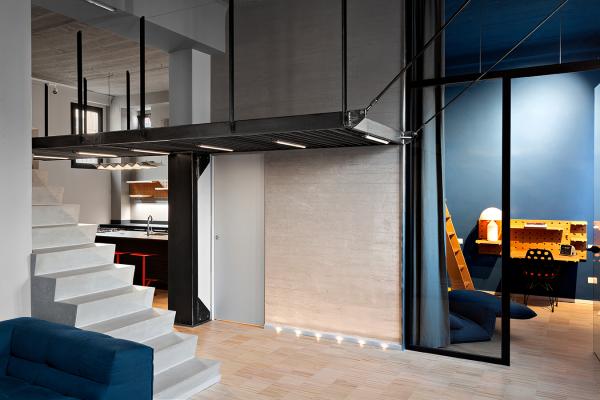
Simply 1.0, 3000K, 1W, pearl chrome Go to the project and credits 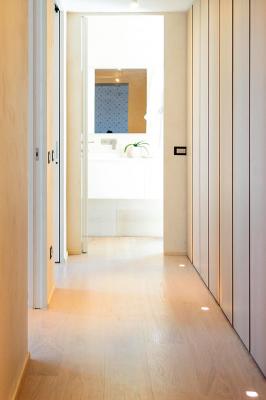
Goccia 2.7, 3000K, 2W Go to the project and credits 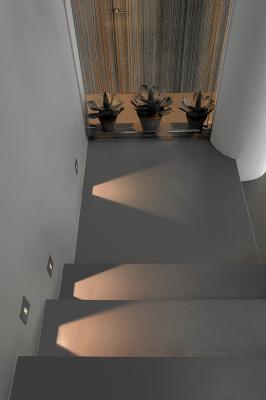
Line 1.0, 3000K, 2W, satin Go to the project and credits
🦶🏻⬆️🦶🏻
Stairs are another type of passageway: a while ago we had fun lighting them in 15 different ways. Read about it here!
We’ve dipped into the home lives of George, Olivia, Sam, Jessica, Megan, Tom and Charlotte to examine the many forms and functions of lighting in private residences.
Do you have a residential project you’d like to share with us?
Bibliography
1. UNI/TS 11826:2021 Light and Lighting – Residential domestic indoor lighting with artificial light.

